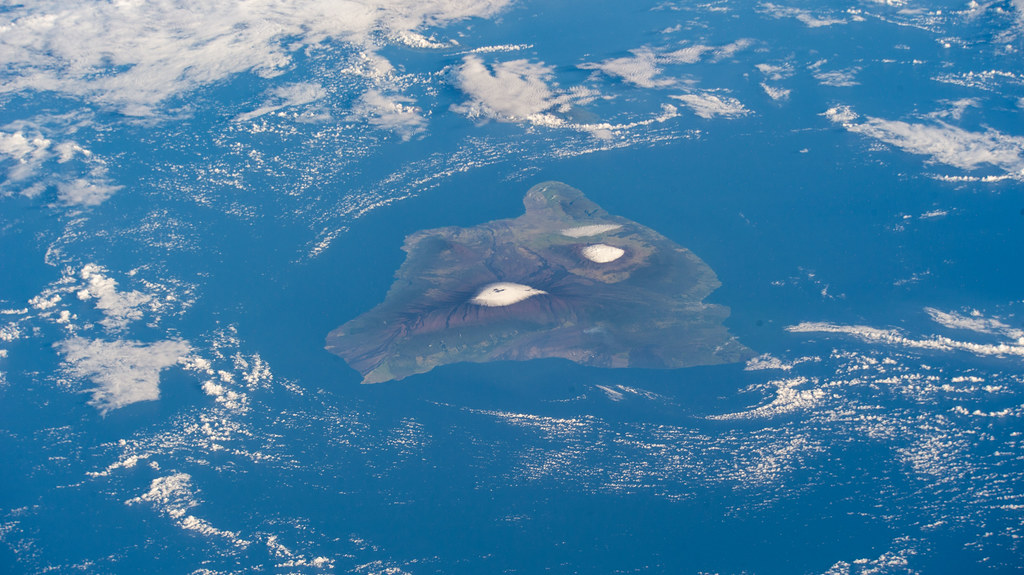#nasamarshall
Text
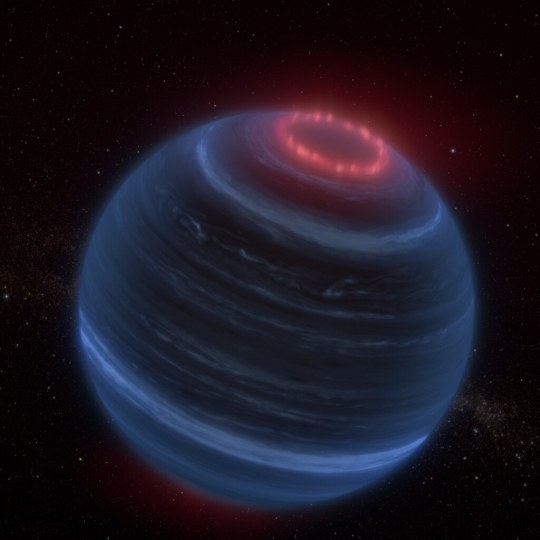
215 notes
·
View notes
Photo

Pacific Ocean From the Space Station by NASA's Marshall Space Flight Center https://flic.kr/p/2nr6Uti
4 notes
·
View notes
Photo
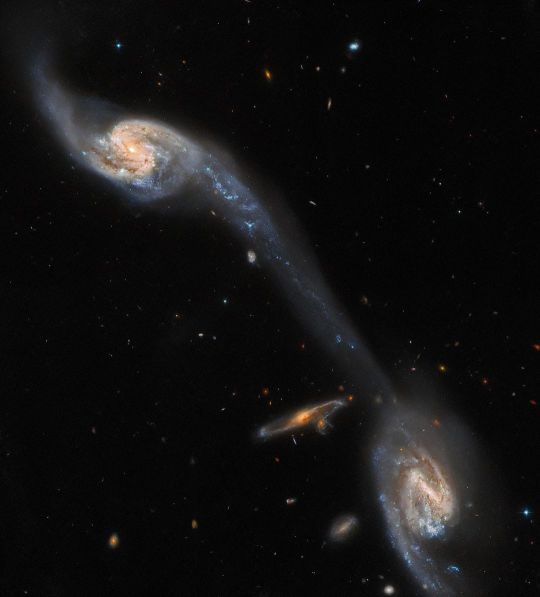
I Believe In Love, Across The Universes, Beyond All Eternities - IMRAN™ “Like breathless lovers in a mind-melting, soul-stretching, imagination-inflaming, reality-ripping erotic dance across eternities.” - Imran Anwar This @NASA - National Aeronautics and Space Administration - image from Hubble is as much science & space to me as love & life in my book. It reminded me of how I believe in love. Love that stretches past the limits of all universes, spanning beyond all eternities. © 2023 IMRAN™ NASA TITLE: Hubble Inspects a Pair of Space Oddities NASA DESCRIPTION: This image from the NASA/ESA Hubble Space Telescope shows two of the galaxies in the galactic triplet Arp 248 - also known as Wild's Triplet - which lies around 200 million light-years from Earth in the constellation Virgo. The two large spiral galaxies visible in this image - which flank a smaller, unrelated background spiral galaxy - appear connected by a luminous bridge. This elongated stream of stars and interstellar dust is known as a tidal tail, and it formed by the mutual gravitational attraction of the two foreground galaxies. #NASA #NASAMarshall #NASAGoddard #ESA #HubbleSpaceTelescope #HST #astrophysics #galaxy #love #romance #eternity #lovers #IMRAN (at imran.tv) https://www.instagram.com/p/CnFMGMRuy6z/?igshid=NGJjMDIxMWI=
#nasa#nasamarshall#nasagoddard#esa#hubblespacetelescope#hst#astrophysics#galaxy#love#romance#eternity#lovers#imran
1 note
·
View note
Video
Hubble Uncovers a Celestial Fossil by NASA's Marshall Space Flight Center
Via Flickr:
This densely populated group of stars is the globular cluster NGC 1841, which is part of the Large Magellanic Cloud (LMC), a satellite galaxy of our Milky Way galaxy that lies about 162,000 light-years away. Satellite galaxies are bound by gravity in orbits around a more massive host galaxy. We typically think of the Andromeda Galaxy as our galaxy’s nearest galactic companion, but it is more accurate to say that Andromeda is the nearest galaxy that is not in orbit around the Milky Way galaxy. In fact, dozens of satellite galaxies orbit our galaxy and they are far closer than Andromeda. The largest and brightest of these is the LMC, which is easily visible to the unaided eye from the southern hemisphere under dark sky conditions away from light pollution. The LMC is home to many globular clusters. These celestial bodies fall somewhere between open clusters – which are much less dense and tightly bound – and small, compact galaxies. Increasingly sophisticated observations reveal the stellar populations and characteristics of globular clusters are varied and complex, and we have yet to fully understand how these tightly packed groups of stars form. However, there are certain consistencies across all globular clusters: they are very stable and hold their shape for a long time, which means they are generally very old and contain large numbers of very old stars. Globular clusters are akin to celestial ‘fossils.’ Just as fossils provide insight into the early development of life on Earth, globular clusters such as NGC 1841 can provide insights into very early star formation in galaxies. Credit: ESA/Hubble & NASA, A. Sarajedini #NASA #NASAGoddard #NASAMarshall #NASAGoddard #HubbleSpaceTelescope #HST #ESA #globularcluster Read more Read more about NASA’s Hubble Space Telescope NASA Media Usage Guidelines
#NASA#Goddard Space Flight Center#GSFC#Solar System & Beyond#ESA#European Space Agency#universe#space#astronomy#Marshall Space Flight Center#MSFC#Hubble Space Telescope#HST#Hubble#globular cluster#NGC 1841#star cluster#globular star cluster#stars#Watch
20 notes
·
View notes
Text

NASA's Marshall Space Flight Center
NASA Telescopes Chase Down “Green Monster” in Star’s Debris
For the first time, astronomers have combined data from NASA’s Chandra X-ray Observatory and James Webb Space Telescope to study the well-known supernova remnant Cassiopeia A (Cas A). As described in our latest press release, this work has helped explain an unusual structure in the debris from the destroyed star called the “Green Monster,” first discovered in Webb data in April 2023. The research has also uncovered new details about the explosion that created Cas A about 340 years ago, from Earth’s perspective.
A new composite image contains X-rays from Chandra (blue), infrared data from Webb (red, green, blue), and optical data from Hubble (red and white). The outer parts of the image also include infrared data from NASA’s Spitzer Space Telescope (red, green and blue). To see the outline of the "Green Monster," go to this link
Credit: X-ray: NASA/CXC/SAO; Optical: NASA/ESA/STScI; IR: NASA/ESA/CSA/STScI/Milisavljevic et al., NASA/JPL/CalTech; Image Processing: NASA/CXC/SAO/J. Schmidt and K. Arcand
NASAMarshall
#NASA#astrophysics#NASAChandra#supernova#NASAWebb#JWST#NASASpitzer#telescopes#combination#stars#cosmos#universe#cosmic fields#nebulas#nebulosas#Green Monster#mood#🖤
2 notes
·
View notes
Video
The Big Island of Hawaii by NASA's Marshall Space Flight Center
Via Flickr:
The big island of Hawaii and its two snow-capped volcanos, (from left) the active Mauna Loa and the dormant Mauna Kea, are pictured from the International Space Station as it orbited 260 miles above the Pacific Ocean. Image Credit: NASA #NASA #NASAMarshall #ISS #InternationalSpaceStation Read more More about the International Space Station NASA Media Usage Guidelines
2 notes
·
View notes
Video
Stellar Snowflake Cluster by NASA's Marshall Space Flight Center
Via Flickr:
From all of us here at Marshall Space Flight Center, we wish you a healthy and happy holiday season! Celebrate with a stellar snowflake that sits within the cosmic Christmas Tree Cluster! Image Credit: NASA/JPL-Caltech/CfA #NASA #NASAMarshall #JPL #JetPropulsionLaboratory #SpitzerSpaceTelescope #Spitzer #ChristmasTreeCluster Read more More about NASA's Spitzer Space Telescope More about NASA's Wide-field Infrared Survey Explorer NASA Media Usage Guidelines
#NASA#Marshall Space Flight Center#MSFC#JPL#Jet Propulsion Laboratory#Spitzer Space Telescope#Christmas Tree cluster#flickr
3 notes
·
View notes
Video
Making Waves in Open Science: NASA Initiatives Enable Ocean Research by NASA's Marshall Space Flight Center
Via ƒ lick R kalegiro inefect ne0nthc 6VCR
As NASA works to make data and research more meaningful and accessible to diverse public and scientific audiences, the agency’s Transform to Open Science (TOPS) program is supporting open science efforts and programs across a variety of scientific disciplines, including climate science and physical oceanography. By leveraging open science principles, NASA encourages and empowers scientists to address critical issues such as melting polar sea ice, rising sea levels, and the overall health of marine ecosystems. The goal of open science is to make NASA research and data more collaborative, accessible, inclusive, and transparent for everyone from the scientist and student to the city manager and citizen. As part of the Open Source Science Initiative, the TOPS team is committed to providing space for everyone in the scientific community to learn about the variety of open science tools and data available, as well as the importance of open science itself. Among the communities that have embraced open science is a NASA-funded consortium called Estimating the Circulation and Climate of the Ocean (ECCO). For more than 20 years, ECCO has been producing models of ocean variables such as sea surface height, sea surface temperature, global mean sea level, sea ice concentration, and ocean bottom pressure. For example, tidal currents often exhibit laminar flow characteristics, visible in the upper left and right corners of the image. This scene was collected by NASA’s Landsat 8 satellite on September 24, 2021. Image Credit: NASA #NASAMarshall #TOPS #TransformtoOpenScience #OpenScience #ocean #landsat Read more NASA Media Usage Guidelines
0 notes
Video
youtube
Liked on YouTube: I Asked An Actual Apollo Engineer to Explain the Saturn 5 Rocket - Smarter Every Day 280 || https://www.youtube.com/watch?v=1nLHIM2IPRY || Keep exploring at https://ift.tt/naeOVmc Get started for free, and hurry—the first 200 people get 20% off an annual premium subscription 2nd Channel Longer interview with Luke Talley: https://youtu.be/cUkbdqw9pBk Luke Talley is a Docent Emeritus at the U.S. Space and Rocket Center in Huntsville, Alabama. https://ift.tt/lMPkRoh I like to make videos that I think are valuable. If you'd like to consider supporting on Patreon to help me continue to be values driven instead of algorithmically driven, here's that link: https://ift.tt/79oa4i2 ⇊ Click below for more links! ⇊ ~~~~~~~~~~~~~~~~~~~~~~~~~~~~ GET SMARTER SECTION Many of the images in this video are taken from the "Saturn V Flight manual" https://ift.tt/qoKkDRp "F-1 Engine Familiarization Training Manual" https://ift.tt/9yLxFTb This Document is AMAZING: "Apollo/Saturn V Space Vehicle Selected Structural Element Review Report, AS-503" https://ift.tt/uPRWTBe In 2018, Marshall Space Flight Center uploaded a ton of really cool old "Saturn V Quarterly Updates". Watching these videos really helped me understand the scale of the Apollo program. What our ancestors did was absolutely amazing. Here is one of those videos: https://www.youtube.com/watch?v=zGtU3vnNeEk Go to the MSFC YouTube channel, scroll back to 2018 and watch those Archival films. They are amazing, even from a film production standpoint. https://www.youtube.com/@NASAMarshall This page jumpstarted my research: https://ift.tt/koIN4hm ~~~~~~~~~~~~~~~~~~~~~~~~~~~~ Tweet Ideas to me at: http://twitter.com/smartereveryday Smarter Every Day on Facebook https://ift.tt/dBW4a9A Smarter Every Day on Patreon https://ift.tt/OUGXwpg Smarter Every Day On Instagram https://ift.tt/M7iFPV0 Smarter Every Day SubReddit https://ift.tt/Ds4RMKI Ambiance, audio and musicy things by: Gordon McGladdery https://ift.tt/7vY05yE https://ift.tt/pqgIWoC If you feel like this video was worth your time and added value to your life, please SHARE THE VIDEO! If you REALLY liked it, feel free to pitch a few dollars Smarter Every Day by becoming a Patron. https://ift.tt/OUGXwpg Warm Regards, Destin
0 notes
Video
NASA’s Juno Exploring Jovian Moons During Extended Mission by NASA's Marshall Space Flight Center
Via Flickr:
After revealing a trove of details about the moons Ganymede and Europa, the mission to Jupiter is setting its sights on sister moon Io. NASA’s Juno mission is scheduled to obtain images of the Jovian moon Io on Dec. 15 as part of its continuing exploration of Jupiter’s inner moons. Now in the second year of its extended mission to investigate the interior of Jupiter, the solar-powered spacecraft performed a close flyby of Ganymede in 2021 and of Europa earlier this year. In this image, the volcano-laced surface of Jupiter’s moon Io was captured in infrared by the Juno spacecraft’s Jovian Infrared Auroral Mapper (JIRAM) imager as it flew by at a distance of was about 50,000 miles (80,000 kilometers) on July 5, 2022. Brighter spots indicate higher temperatures in this image. Image credit: NASA/JPL-Caltech/SwRI/ASI/INAF/JIRAM #NASA #MarshallSpaceFlightCenter #MSFC #Marshall #jpl #jetpropulsionlaboratory #nasamarshall #juno #nasajuno #Io Read more More about Juno NASA Media Usage Guidelines
#NASA#Marshall Space Flight Center#MSFC#Jet Propulsion Laboratory#JPL#Solar system and beyond#Juno#Jupiter#Space#planets#Io#flickr
1 note
·
View note
Text
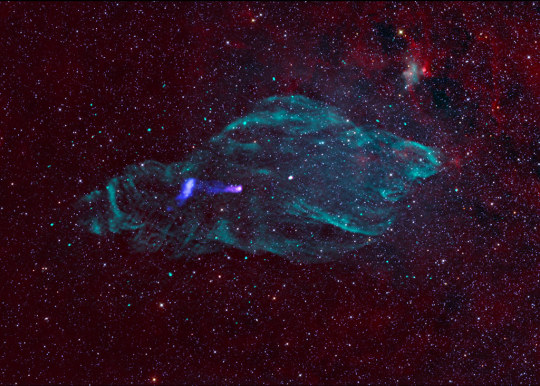
#IFTTT#Flickr#nasa#nasasmarshallspaceflightcenter#nasamarshall#marshall#msfc#solarsystembeyond#astronomy#astrophysics#chandraxrayobservatory#ixpe#imagingxraypolarimetryexplorer#quasar#blackhole
106 notes
·
View notes
Photo
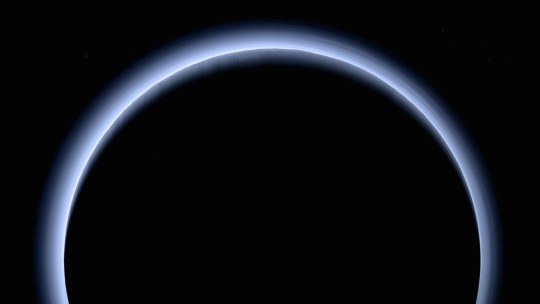
A Blue Farewell by NASA's Marshall Space Flight Center https://flic.kr/p/2oiBxdg
1 note
·
View note
Photo

First X-rays from Uranus Discovered by NASA's Marshall Space Flight Center https://flic.kr/p/2kQGBZr
1 note
·
View note
Photo

A Cosmic Amethyst in a Dying Star by NASA's Marshall Space Flight Center
+
1 note
·
View note
Photo
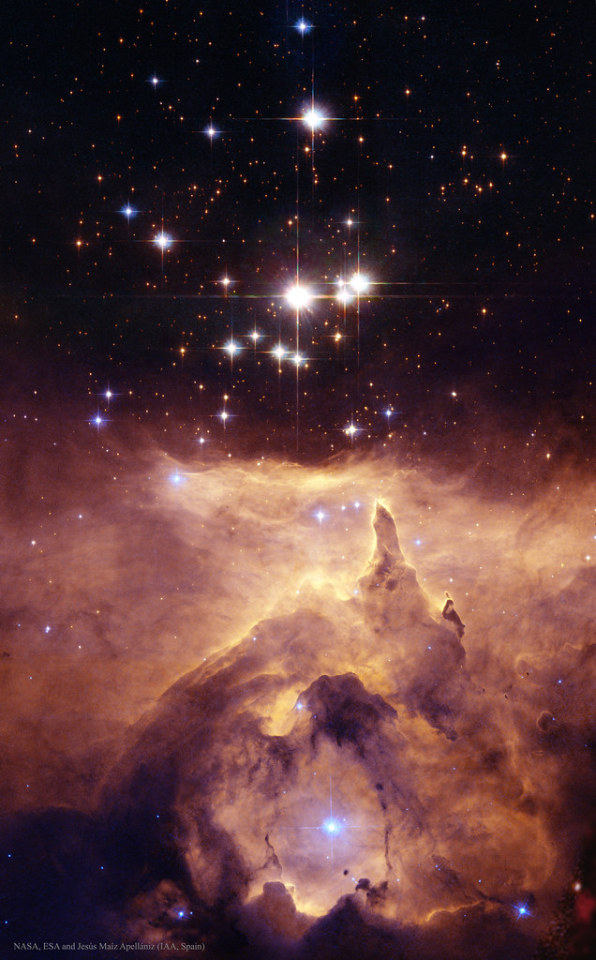
Cathedral to Massive Stars by NASA's Marshall Space Flight Center How massive can a normal star be? Estimates made from distance, brightness and standard solar models had given one star in the open cluster Pismis 24 over 200 times the mass of our Sun, making it one of the most massive stars known. This star is the brightest object located just above the gas front in the featured image. Close inspection of images taken with the Hubble Space Telescope, however, have shown that Pismis 24-1 derives its brilliant luminosity not from a single star but from three at least. Component stars would still remain near 100 solar masses, making them among the more massive stars currently on record. Toward the bottom of the image, stars are still forming in the associated emission nebula NGC 6357. Appearing perhaps like a Gothic cathedral, energetic stars near the center appear to be breaking out and illuminating a spectacular cocoon. Image Credit: NASA, ESA and Jesús Maíz Apellániz (IAA, Spain); Acknowledgement: Davide De Martin (ESA/Hubble) #NASA #MarshallSpaceFlightCenter #MSFC #Marshall #HubbleSpaceTelescope #HST #astronomy #space #astrophysics #Goddard #GoddardSpaceFlightCenter #ESA #EuropeanSpaceAgency #galaxy #supernova #solarsystemandbeyond #gsfc #nebula #opennebula Read more More about the Hubble Space Telescope NASA Media Usage Guidelines https://flic.kr/p/2jCFZVE
2 notes
·
View notes
Video
Cays of the Bahamas by NASA's Marshall Space Flight Center
Via Flickr:
(From left) Culmer's Cay, Glass Cay, Tommy Young's Cay, Davy Cay, Hog Cay, and Green Turtle Cay—islands off the mainland Great Abaco in the Bahamas— appear like jigsaw puzzle pieces as the bright teals and blues of the Atlantic Ocean flow and swirl between the land. The International Space Station orbited 259 miles above as this photograph was taken. Image Credit: NASA #NASA #NASAMarshall #ISS #InternationalSpaceStation #Earth #bahamas Read more More about the International Space Station NASA Media Usage Guidelines
1 note
·
View note

